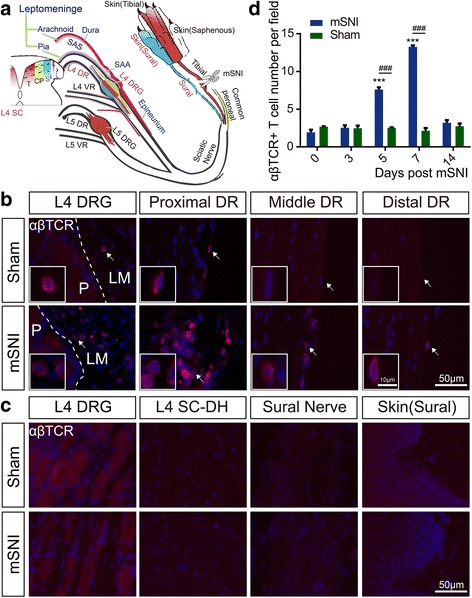Fig. 1.

Mapping of αβ T cells along the somatosensory pathways after adult rat mSNIs. a Schematic illustration of the target tissues (in red font), which were mapped for αβ T cells along the somatosensory pathways for the transmission of mechanical allodynia on the glabrous sural skin territories after mSNIs or sham surgeries (n = 5/group). The L4 SC-DH is somatotopically divided along the mediolateral axis into the injured tibial innervation territories (~ medial 45%), the intact common peroneal innervation territories (~ central 1/4) and the intact sural innervation territories (~ lateral 1/3). The proximal and distal stumps of the injured tibial nerves and the hindpaw glabrous skins innervated by the tibial nerves were also examined. b The infiltration of αβ T cells across the whole course of the L4 DR leptomeninges 7 days after mSNIs and sham operations. c The infiltration of αβ T cells in the cell-body-rich areas of L4 DRGs, L4 SC-DHs, the sural nerves, and the hindpaw glabrous sural skins 7 days after mSNIs and sham operations. d The temporal dynamics of αβ T cell infiltration into the leptomeninges covering the proximal L4 DRs at the DR portions of the SAAs after mSNIs and sham operations. ***P < 0.001; after versus before mSNIs. ###P < 0.001; mSNI versus sham operation. CP common peroneal, DR dorsal root, DRG dorsal root ganglion, LM leptomeninge, mSNI modified spared nerve injury, P parenchyma, SAA subarachnoid angle, S sural, SAS subarachnoid space, SC spinal cord, SC-DH spinal cord dorsal horn, T tibial, VR ventral root
